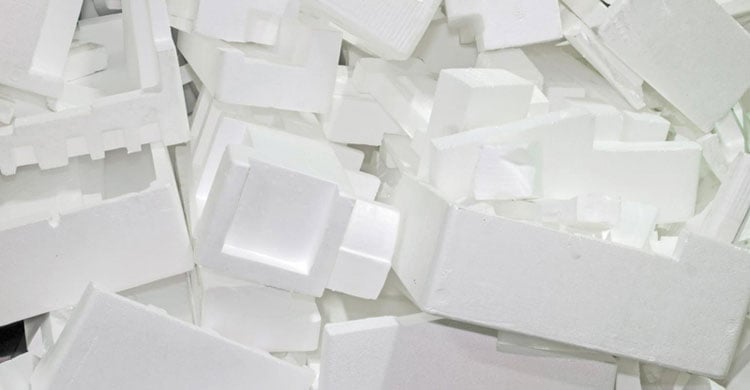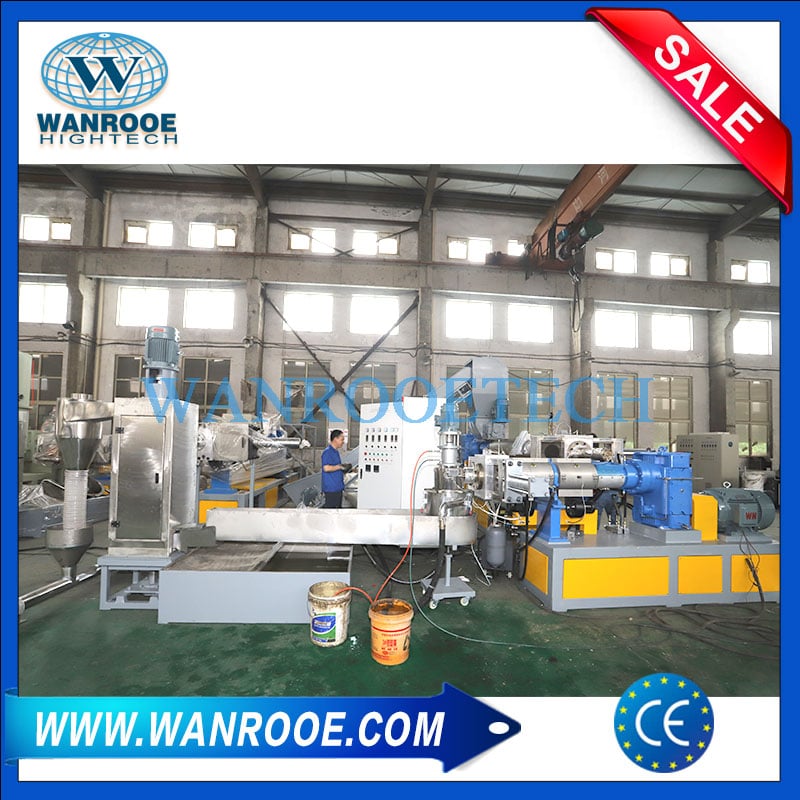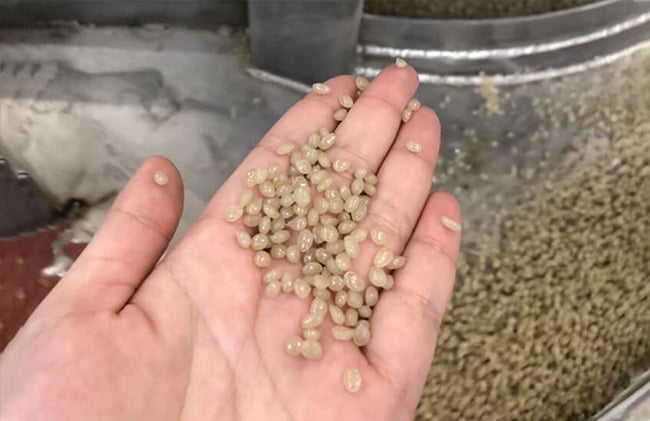EPS Foam Recycling Pelletizer
Why do we need EPS recycling?
Styrofoam (EPS) has excellent durable insulation, unique buffer shock resistance, aging resistance and waterproof, therefore in the construction, packaging, electronic products, ships, vehicles and aircraft manufacturing, decoration materials, building construction and other fields has been widely applied, a great convenience to our life. But more than 50% of them are electronic cushioning packaging, fish tank and agricultural products such as packaging, these products are abandoned after one-time use, because of EPS bacteria resistance, weather resistance, corrosion resistance, 300 years to fully biodegradable under aerobic conditions, a large number of abandoned foamed plastic scattered in the natural environment, be living environment of the earth "white pollution".

At present, the world produces about 12 million tons of polystyrene foam each year, of which China produces about 1.8 million tons. Except for a few developed countries, the waste PS foam material has not been effectively recycled in most countries and regions. According to incomplete statistics, the recycling rate of PS foam in Nordic countries and Japan is 72%, that in South Korea is 64%, and that in other countries and regions is only 10-30%. In China, 70 percent of the waste is buried or incinerated and only 30 percent is recycled due to inadequate recycling mechanisms.
Five EPS recycling methods and bottlenecks
EPS Recycling of heat energy by incineration
Heat recovery by incineration means that waste polystyrene plastics are burned in a special incinerator to replace part of the fuel. The calorific value of polystyrene is as high as 4600kJ/kg, exceeding the average calorific value of fuel oil of 4400kJ/kg, which can partially replace the fuel for ironmaking, power generation and combustion boilers. Although the combustion method can obtain energy but need to use a special combustion blast furnace, otherwise insufficient combustion of polystyrene will produce styrene, dioxins and other harmful substances, causing secondary pollution to the environment. The cost of incineration recovery devices is high, and the use-value of materials is not fully utilized.
Chemical pyrolysis to recover styrene monomer
Polystyrene breaks down easily into aromatic compounds at high temperatures. The waste polystyrene foam material can be cracked into gaseous products such as C1-C4 hydrocarbons and liquid products such as styrene and aromatic hydrocarbons by high-temperature pyrolysis. At 580℃, polystyrene can be cleaved to 65% styrene monomer and 10% oligomer. Chemical pyrolysis is one of the ways of high-quality recovery. Its disadvantage is that the energy consumption in the recovery process is large, and there are problems of low recovery and easy carbonization on the recovery equipment in the process of industrial production.
Solvent recovery into granules
Solvent method recycling PS waste foam plastic does not need to go through the high-temperature process, the performance of recycled products close to the suspension method of polystyrene, and because the product is directly obtained by the spherical particles, can be impregnated foam plastic.
The recycling of PS waste foam by solvent method can maintain the physical and chemical properties of the material to the greatest extent, and the recycled material has excellent performance and a wide range of use, which can be used to replace the new material to manufacture high-grade PS plastic products. However, most of the solvents that dissolve PS, such as benzene and benzene derivatives, have strong toxicity, while ester solvents, although non-toxic, have large odor and high price, which are not suitable for large-scale production.
It is reported that SONY Central Research Institute of Japan has developed the PS foam recycling treatment system (Rena), which has high safety and similar molecular structure to PS, using limonene as the solvent. The newly developed Rena system dissolves PS waste foam with limonene in a natural solvent, reduces volume by about 1/25, and then conducts filtration, solvent separation and granulation in the regeneration treatment equipment to produce recycled PS. The solvent recovery is up to 98%-99%. However, limonene is more expensive and not suitable for large-scale use.
EPS Recovery of granulation by melt plastic extrusion granulator
Due to the melting extrusion method of polystyrene foam EPS recycling equipment investment is less, the process is simple, in the reasonable process under the condition of the recovery of particles can be better maintained, product versatility, the characteristics of the application. With the emergence of a new recovery extruder and new recovery technology, the quality of polystyrene recovered by melting extrusion is improved. In recent years, some of the large-scale recycling enterprises in China continue to increase their investment in research and development, and the recycling level has reached an international advanced level.
Other EPS Recycling methods
In addition to the above four EPS recycling methods, waste polystyrene plastic can also be modified to make paints, coatings, adhesives, asphalt reinforcers, to prepare flocculant for sewage treatment of printing and dyeing plants, to produce flame retardant brominated polystyrene after being brominated, and to make thermal insulation materials mixed with cement concrete.
In summary, the EPS recycling granulator method is a better recovery method, which focuses on the process of melt granulation recovery.

EPS Recycling granulation process:
Because EPS is foaming material, EPS is not convenient to transport, so through the EPS foam pre-treatment equipment, in order to achieve the purpose of reducing the foam volume, in order to facilitate long-distance transportation, and then EPS foam shredder machine or EPS foam crusher will reduce the size, finally, EPS crushing material granulator machine, using strip granulation, plastic particles.

Application of EPS recycling particles:
The PS recycled particles produced by the two-stage screw extruded granulator equipment are mainly used to make the XPS extruded plate, PS foam frame, PS foaming building decoration materials, frame, and skirt line and other frame finished products. Then, then sell them around the world.
With the intensification of market competition, more and more companies are not satisfied with simple low-level recovery granulation. They impart new properties to materials by adding various additives during foam recovery, thereby increasing the added value of PS recovery materials to achieve high-quality regeneration.
Wanrooetch provides you with solutions for the entire EPS recycling plant, any questions about EPS foam recycling, welcome to contact us!
In order to better provide you with a professional answer, when sending an inquiry, please describe your parameters or technical requirements (such as processing materials, output size, capacity, etc.), we will reply to you as soon as possible!









